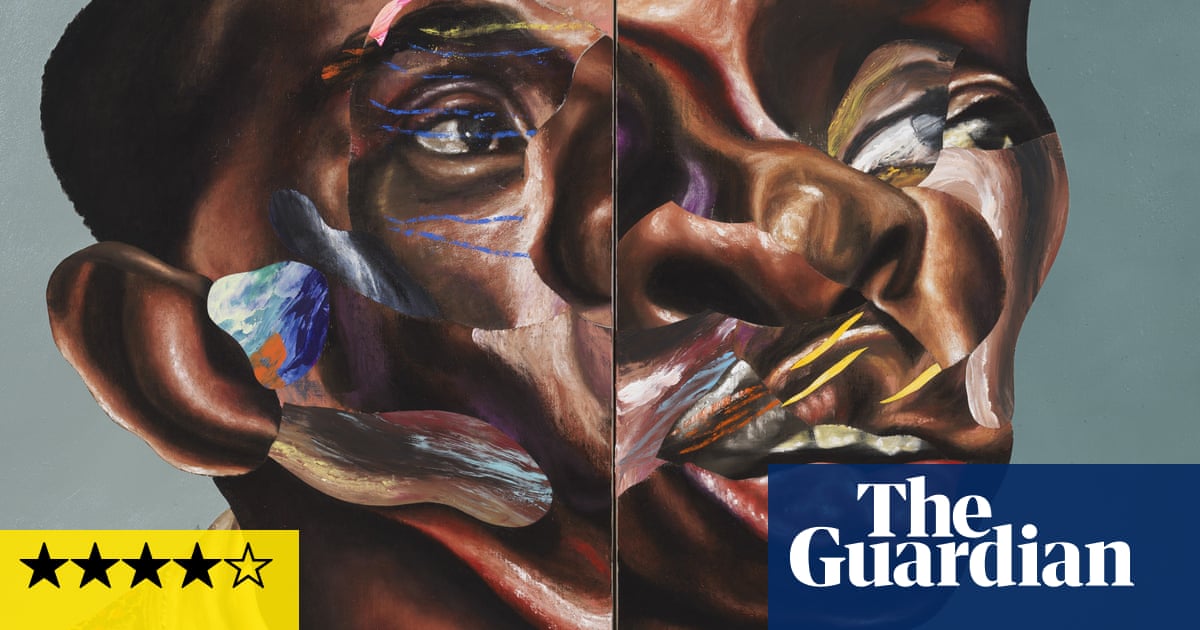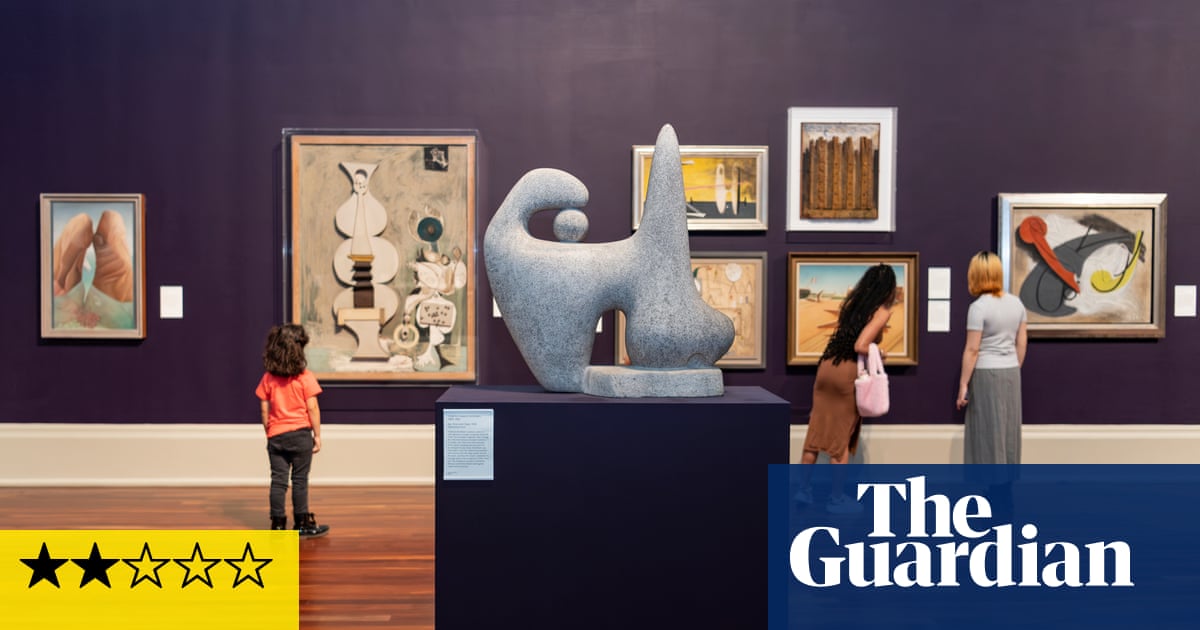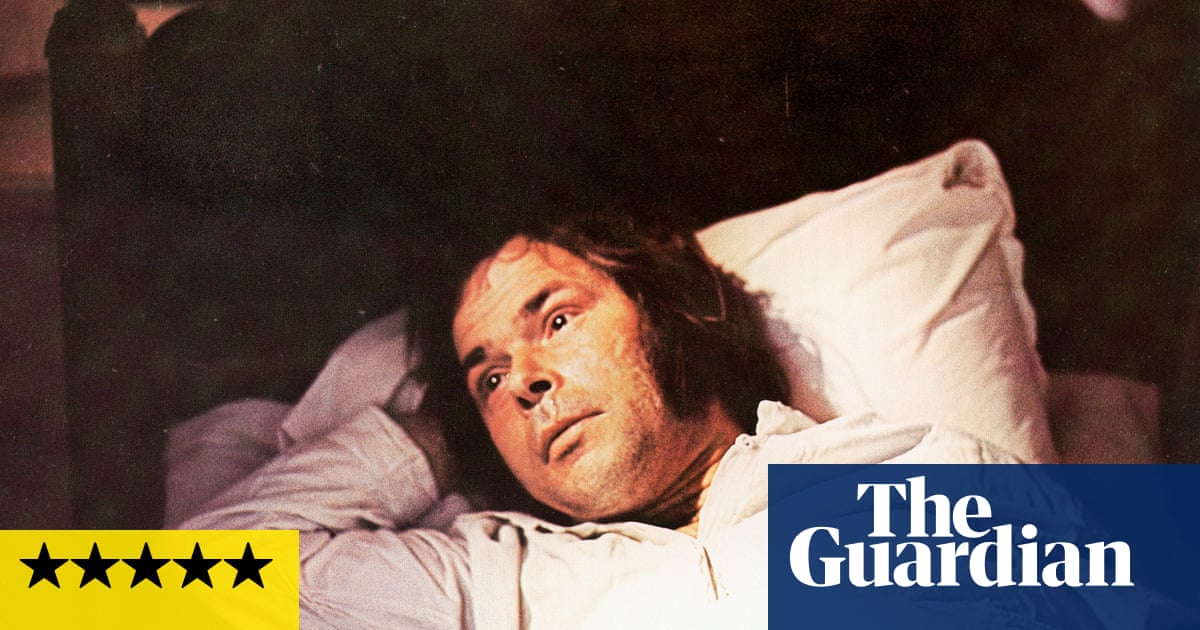
Hands on hips, feet apart, head up and tilted to one side, her eyes closed in concentration, Thomas J Price’s monumental, gold-patinated bronze black woman towers over us. Oblivious to our presence and our gaze, she’s spotlit against a dark wall. Stilled in a perpetual moment, it is as if she’s listening to music only she can hear. Based on 3D scans of people Price has encountered in London and Los Angeles, As Sounds Turn to Noise is a portrait of someone who doesn’t exist, but she’s present in every sense, owning the space around her.
Also with a hand on her hip, Claudette Johnson’s self-portrait rears before a backdrop derived from Picasso’s Demoiselles d’Avignon. Johnson gives the viewer a baleful, almost accusatory look. If she’s playing a game with Picasso’s infatuation with what he saw as the exotic and the primitive, she does so by being more real and more present than his mask-like heads. She isn’t playing nature to anyone’s culture.
The imagined, the real and the remembered rub shoulders in The Time is Always Now at the National Portrait Gallery, an exhibition that shuttles back and forth between times and places, between sculpture and painting, and between fiction, folklore and history. Subtitled Artists Reframe the Black Figure, the exhibition does a great deal more than that, and its 22 black figurative artists from the UK and the US fill the exhibition with striking and sometimes alarming images. It is also filled with fragmentary stories, not least the artists’ own, with their own lineages and the backstories of diaspora.
Not long after his mother died, Nathaniel Mary Quinn returned home from school to find the place abandoned, his father and his siblings gone. They were lost to the streets, to gambling and drink and drugs and he never saw them again. Quinn’s paintings are a confusion of identities. Faces sheer apart. They bulge and slew, their composite parts – noses, eyes, lips and cheeks – are jammed into patched-together coherence. These people are about to disintegrate or implode at any moment. They’re provisional, making themselves up on the fly. This is self-invention at its most extreme. Quinn’s images are full of fault-lines and glitches.
They’re the opposite of Amy Sherald’s static, poised frontal paintings. These have a calculated stillness and decorum in which small details – a zipper on a dress, painted nails – pin us to the understatement. Famous for her official 2018 portrait of first lady Michelle Obama, Sherald’s work reduces the variety of skin tones to greyscale tonal values, painting colour in terms of black and white.
There are great and unsettling things here. Kerry James Marshall’s figures and subjects are almost unrelievedly, densely black. Marshall paints a black woman on a bed, as if she were lit by a powerful white spotlight. Except she remains a silhouette, the disc of light entirely failing to illuminate her (look closer – the supposed oval of light is a white towel placed beneath her). In another work, a black painter works on her own, paint-by-numbers self portrait. There’s no black on her palette. Marshall’s art is all about depictions of blackness and what it means to be a black artist in a historically white institution and art world.
Some of the paintings here almost beg for a movie or a novel or a history lesson. What is the relationship between the two guys who seem to be posing for a snapshot in Henry Taylor’s Right Hand, Wing Man, Best Friend, and All the Above! Or between the protagonists in Lubaina Himid’s The Captain and the Mate, or in her uneasy scene aboard the notorious slave ship Le Rodeur. It looks like a tableau from a Greek tragedy that’s about to turn bloody. Nor can you look at the late Noah Davis’s paintings without thinking something awful is about to happen, if it hasn’t already. There are bodies in the yard and the gateposts are topped with mounds of golden dung and something like a baseball bat or a missile is coming through the clouds in his Black Wall Street, 2008, which commemorates the Tulsa race massacre in 1921. This is a haunted image.
Why is the formidable Harriet Tubman, escaped slave and abolitionist, pointing a gun at the guy floundering at her feet in Kimathi Donkor’s Harriet Tubman en Route to Canada? We’re on the Underground Railroad, freedom within sight. It looks like a scene from a sensationalist 19th-century news story.
At times the show celebrates ordinary life, if there is such a thing. Toyin Ojih Odutola paints the imagined lives of an entirely fictional wealthy Nigerian family in the US, and Jordan Casteel paints an elderly guy she befriended on the street in Harlem. We revisit the Birmingham barber shop where Hurvin Anderson had his hair cut as a kid, and end up in the jam-packed cavern of a reggae club with Denzil Forrester. We might be in Jamaica, but we are also remembering the London clubs of Forrester’s youth. Everything is seething and jumping. Forrester’s Itchin and Scratchin has got futurism and cubism and flailing hair and a giant speaker blaring in the blue light. It is a marvellous painting, funny and smart and full of life. Get on over there.
The Time is Always Now: Artists Reframe the Black Figure is at the National Portrait Gallery, London, from 22 February to 19 May












